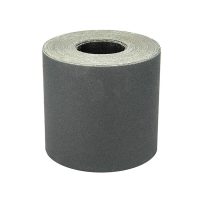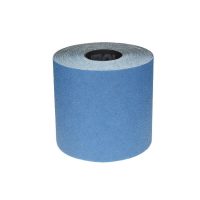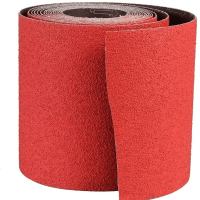What is abrasive cloth?
Abrasive cloth, also known as sandpaper, is a material used for sanding and smoothing surfaces by rubbing it against the material. It consists of a strong fabric or paper backing coated with abrasive particles such as aluminum oxide, silicon carbide, or garnet. The abrasive particles are bonded to the backing using adhesives and can vary in size and density, depending on the level of abrasiveness needed for the job. Abrasive cloth is used in various industries, including woodworking, metalworking, automotive, and construction, for tasks such as sanding, polishing, and surface preparation.
What types do abrasive cloth include?
There are different types of abrasive cloth available in the market, each with their own unique characteristics and applications. Now, we will discuss some of the most common types of abrasive cloth.
- Emery Cloth
Emery cloth is one of the oldest types of abrasive cloth available. It is made of a fabric backing material, such as cotton or linen, that is coated with emery, a type of mineral abrasive that is made of iron oxide. Emery cloth is a relatively low-cost option for abrasive cloth, and it is commonly used for hand sanding applications.
Aluminium oxide cloth is a type of abrasive cloth that is made of a fabric backing material, such as cotton or polyester, that is coated with aluminium oxide abrasive particles. It is a popular option for metalworking applications, as it is known for its durability and resistance to heat. Aluminium oxide cloth is also commonly used for sanding wood and plastics.
- J-weight Flexible Cloth
J-weight flexible cloth is a type of abrasive cloth that is made of a lightweight, flexible fabric backing material, such as cotton or polyester, that is coated with abrasive particles. It is commonly used for sanding and finishing applications in industries such as woodworking and automotive. J-weight flexible cloth is known for its flexibility, which allows it to conform to irregular surfaces.
- Silicon Carbide Abrasive Cloth
Silicon carbide abrasive cloth is a type of abrasive cloth that is made of a fabric backing material, such as cotton or polyester, that is coated with silicon carbide abrasive particles. It is a popular option for sanding and finishing applications in industries such as metalworking and woodworking. Silicon carbide abrasive cloth is known for its ability to cut quickly and evenly, and it is particularly effective on hard materials such as glass and ceramics.
Zirconia oxide abrasive cloth roll is a type of abrasive cloth that is made of a fabric backing material, such as polyester or cotton, that is coated with zirconia oxide abrasive particles. It is a high-performance option for sanding and grinding applications in industries such as metalworking, aerospace, and automotive. Zirconia oxide abrasive cloth roll is known for its durability and long life, and it is particularly effective on hard materials such as stainless steel and titanium.
- Ceramic Aluminium Oxide Cloth Roll
Ceramic aluminium oxide cloth roll is a type of abrasive cloth that is made of a fabric backing material, such as polyester or cotton, that is coated with a blend of ceramic and aluminium oxide abrasive particles. It is a high-performance option for sanding and grinding applications in industries such as metalworking and aerospace. Ceramic aluminium oxide cloth roll is known for its ability to cut quickly and evenly, and it is particularly effective on hard materials such as stainless steel and titanium.
Endless belts are a type of abrasive cloth that are made of a continuous loop of fabric backing material, such as polyester or cotton, that is coated with abrasive particles. They are commonly used in industries such as metalworking and woodworking for sanding and grinding applications. Endless belts are available in a range of grit sizes and backing materials, and they can be used on a variety of materials, including wood, metal, and plastics.
What are different abrasive cloth used for?
- Emery Cloth: Emery cloth is commonly used for sanding and polishing metals, wood, and other materials in industries such as woodworking, metalworking, automotive repair, and construction.
- Aluminium Oxide Cloth: Aluminium oxide cloth is suitable for sanding and polishing ferrous and non-ferrous metals, wood, and other materials. It is used in industries such as metalworking, woodworking, and automotive repair.
- J-weight Flexible Cloth: J-weight flexible cloth is ideal for sanding and polishing curved surfaces, as well as for general purpose sanding of wood, metal, and other materials. It is commonly used in woodworking, metalworking, and automotive repair.
- Silicon Carbide Abrasive Cloth: Silicon carbide abrasive cloth is commonly used for sanding and polishing hard and brittle materials such as glass, ceramics, and stone. It is used in industries such as glass and ceramic manufacturing, as well as in the automotive and aerospace industries.
- Zirconia Oxide Abrasive Cloth Roll: Zirconia oxide abrasive cloth roll is ideal for heavy-duty sanding and grinding of metal, wood, and other materials. It is used in industries such as metalworking, woodworking, and automotive repair.
- Ceramic Aluminium Oxide Cloth Roll: Ceramic aluminium oxide cloth roll is used for high-speed sanding and grinding of metal, wood, and other materials. It is commonly used in the metalworking and woodworking industries.
- Endless Belts: Endless belts are used for sanding and grinding in various industrial applications, including metalworking, woodworking, and automotive repair. They are available in different types of abrasive cloths, depending on the material being worked on and the level of abrasiveness needed.
Q & A about abrasive cloth
Since the abrasive cloth is versatiel, there are more and more people pay attention to it and ask some questions, following we give relevant answer.
Q: What is the difference between abrasive cloth and sandpaper?
A: Abrasive cloth and sandpaper are very similar materials, but there are some differences between them. Abrasive cloth is made from a fabric backing, while sandpaper is made from a paper backing. Abrasive cloth is generally more durable than sandpaper, and is used for heavy-duty sanding and grinding tasks. Sandpaper is better suited for lighter tasks, and is often used for finishing work.
Q: How is abrasive cloth manufactured?
A: Abrasive cloth is manufactured by coating a fabric backing with abrasive particles, using a process known as electrostatic coating. The abrasive particles are charged with electricity and then sprayed onto the fabric, where they stick to the surface. The cloth is then cured in an oven to set the particles in place. Different types of abrasive particles can be used, depending on the desired level of abrasiveness and the material being worked on.
Q: What is the grit level of abrasive cloth?
A: The grit level of abrasive cloth refers to the level of abrasiveness of the particles used to coat the backing material. Grit levels range from very fine (around 220 grit) to very coarse (around 40 grit). The higher the grit level, the finer the abrasive particles and the smoother the finish that can be achieved.
Q: What is the best way to use abrasive cloth?
A: The best way to use abrasive cloth depends on the material being worked on and the task at hand. Generally, the cloth should be wrapped around a sanding block or other tool to provide a firm, flat surface for sanding. The cloth should be moved back and forth in a straight line, with light pressure, until the desired level of smoothness is achieved. It’s important to use the appropriate grit level for the task, and to avoid pressing too hard, as this can damage the surface being worked on.
Q: What are some safety precautions to take when using abrasive cloth?
A: When using abrasive cloth, it’s important to wear eye protection and a dust mask to avoid inhaling particles. Gloves can also be helpful in protecting hands from rough or sharp edges. It’s important to follow the manufacturer’s instructions for the specific type of abrasive cloth being used, and to use the appropriate grit level for the task. Finally, it’s important to be careful when handling the abrasive cloth, as the particles can be sharp and can cause injury if mishandled.
Conclusion
Abrasive cloth is a versatile and durable abrasive material that is commonly used in various industries for sanding, polishing, and deburring a wide range of materials. With a variety of grit sizes, backing materials, and abrasive types, abrasive cloth can be tailored to specific applications and desired finishes. While abrasive cloth has many benefits, safety precautions must be taken to avoid injury and damage to materials. Proper storage and disposal of abrasive cloth can also help minimize its environmental impact. Overall, abrasive cloth is a useful tool for achieving high-quality results in metalworking, woodworking, and other industries.
want to know more about us click to visit our website at www.binictools.com

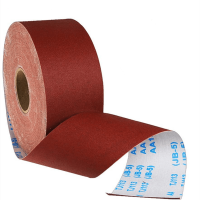
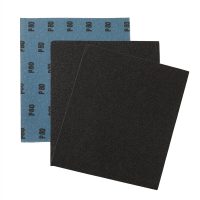
-70000026-e1670224214496.png)
-70000027-e1670224234667.png)
